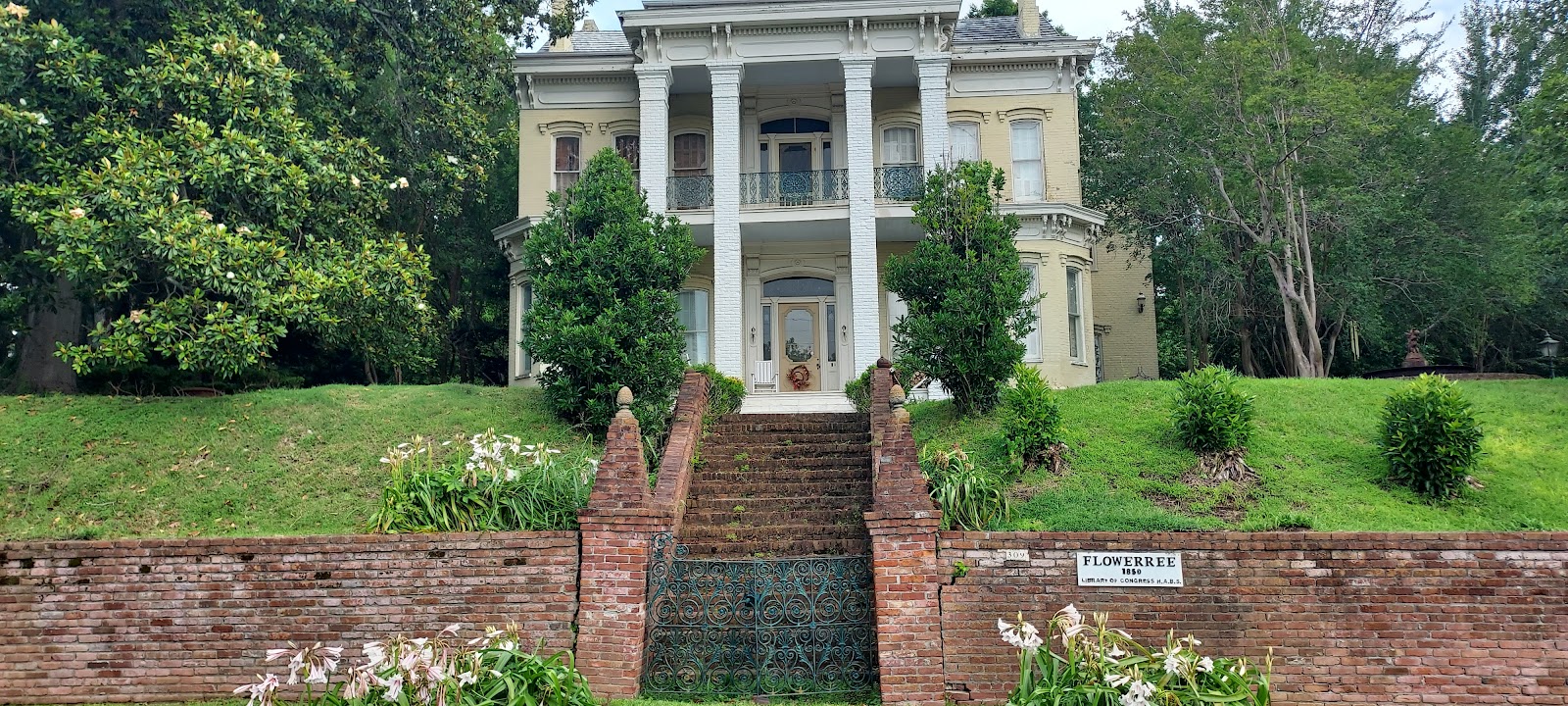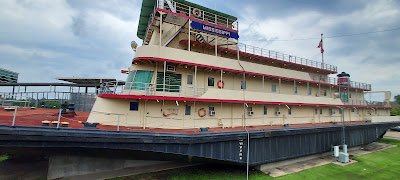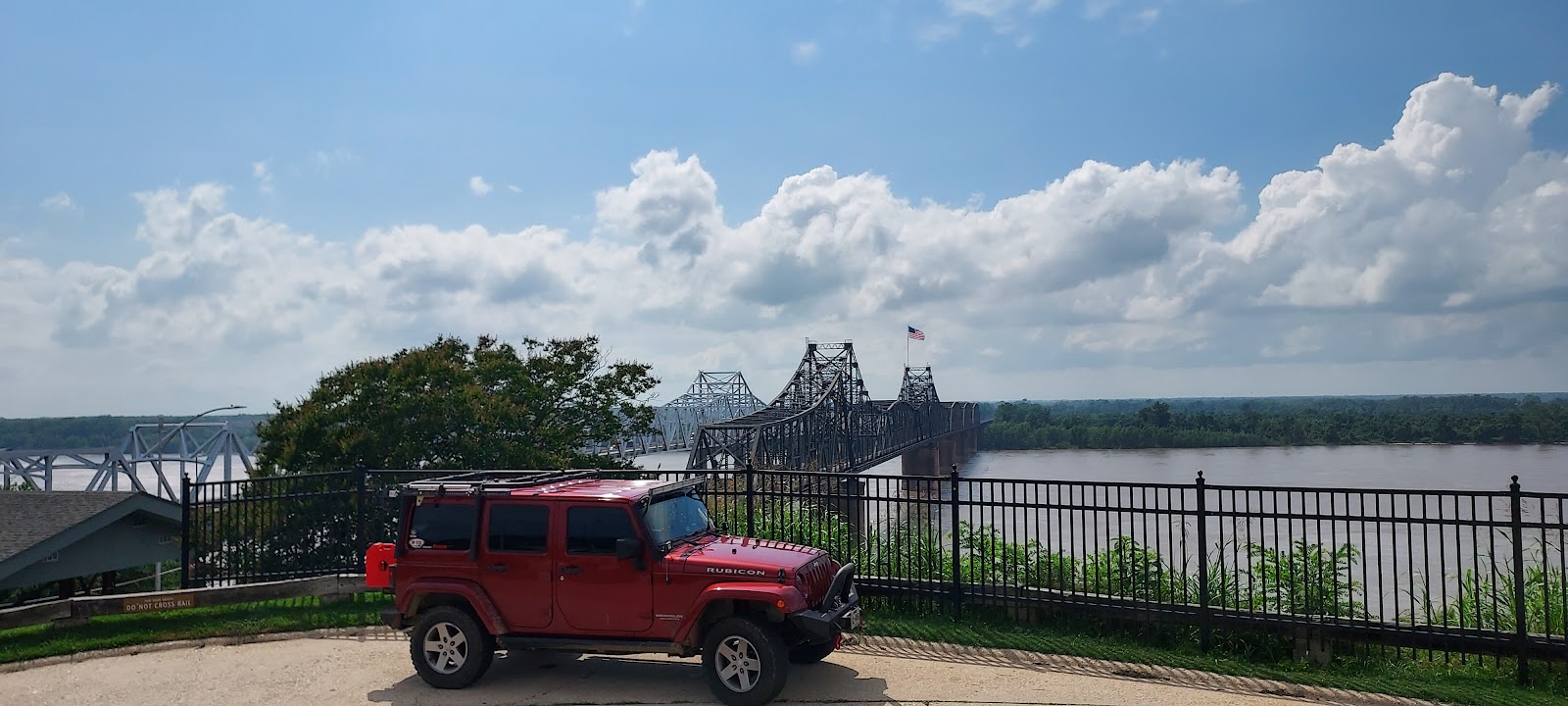Though we came to Vicksburg specifically to tour the
National Military Park/National Cemetery, we visited other attractions/areas of
interest that Vicksburg had to offer.
We stopped at Cedar Hill Cemetery’s Soldiers’ Rest to pay
respects to the Confederate troops who lost their lives in the Civil War. They, too, were God's children whose lives mattered. Whether fathers, sons, brothers, friends--their deaths left a void in the hearts of their loved ones.
Among the graves is a marker for Old Douglas,
a dromedary (one-humped) camel who served with the MS 43rd
Infantry. Supposedly, he was killed in
battle by Union sharpshooters, but there is some speculation that, with food so
scarce, starving Confederate troops used him as a source of protein. After all, it was not uncommon for dogs, cats, and even rats (perish the thought!) to be eaten by the famished Confederates during the
Vicksburg Siege.
To me, there is no better way to explore a city than by
doing a walking tour. Hence, we hoofed 3+ miles within Vicksburg’s downtown historic district to take in the sights like the Railroad Station, Veterans
Memorial Park, the old County Courthouse, a multitude of churches, and several antebellum buildings and homes. Many of these homes are now operating as Bed & Breakfast establishments. The photos below are a small sampling of all the architecturally-diverse structures we viewed.
 |
| Now a museum, the Mississippi Valley Railroad Station in Vicksburg was built in 1907. It overlooks the Yazoo River. |
 |
| Veterans Memorial Park |
 |
| Old Warren County Courthouse, circa 1861 |
 |
| Crepe Myrtle tree blooming |
 |
| Christ Episcopal Church was organized in 1826, making it Vicksburg oldest church. |
 |
| Bethel African Methodist Episcopal Church, founded 1864, has some lovely stained-glass windows. |
 |
| The steeple of St. Paul Catholic Church. The original church building, circa 1849, was destroyed by a tornado in 1953. |
 |
| City Hall, built in 1903, had renovations done in 1940 which included enclosing the second floor verandas to make more offices. The original building design included angels as rooftop ornamentation. Supposedly, these were knocked off during the 1953 tornado and subsequently "lost". Sounds suspicious to me! |
 |
Anchuca, built between 1830 and 1855, was the first house in Vicksburg to have columns.
|
 |
| The Vick House was built in 1830 in Greek Revival style. |
 |
| Constructed in the mid-1830s, this home served as the headquarters for Confederate General McPherson after the Confederacy surrendered to the Union on July 4, 1863. |
 |
| I just loved seeing all the antebellum homes along the cobblestoned streets. |
 |
| Flowertree, 1877 Italianite-styled townhouse, was listed for sale in 2018. At 5,000+ square feet, that's a lotta space and rooms to fill! |
We strolled along the River to view the murals that portray the history of
Vicksburg.
And after looking at the flood
gauges on the levee walls, we decided a visit to the Jesse Brent Lower
Mississippi River Museum was in order. The Museum is quite interesting and, best of all, admission is free! It highlights the joint efforts of
the US Army Corps of Engineers (USACE) and the Mississippi River Commission
(MRC) to balance commercial navigation, water supply issues, and the need to mitigate
flooding/minimize economic loss, all while practicing environmental
stewardship. No easy task when you
consider that the Mississippi is the largest River System in North
America. It spans 2,300 miles, from its headwaters in Itasca State Park in MN (I dipped my feet there in 2022!) to the Gulf of
Mexico. The Mississippi River Watershed
covers 41% of the continental U.S.A., and it ranks #3 as largest river
watershed in the world!

During the 1927 flood of the Mississippi River, water levels
breached the levee in 145 places, flooded 27,000 square miles, affected a half
dozen states, and displaced hundreds of thousands of people. The power of water is amazing yet fearsome.
While at the Museum, we also toured the Motor Vessel
Mississippi IV. It was the USACE’s first diesel-powered motor vessel, utilized as a towboat and inspection vessel. It featured office and meeting space, living
quarters, control rooms, and it was equipped with some cutting edge electronics for the time period. It was decommissioned in
1993.
 |
| Notice the Sears Graduate Model electric typewriter on the desk. |
 |
| What could possibly go wrong if Dad... |
 |
| ...and yours truly were at the helm! |
 |
| The vibration from these Nordberg diesel engines rocked the boat so much that the USACE delayed accepting delivery of Mississippi IV. The problem never was remedied fully, right up until the time of decommission! |
 |
| Cutting edge electronics: A Radio Shack personal computer and a word processor! |
We enjoyed a scenic and historic driving experience as we traversed
for about 50 miles along the Natchez Trace Parkway, a 400+ mile roadway that
extends from Natchez, MS to Nashville, TN.
It follows, to some extent, the Old Natchez Trace, a forest trail
created thousands of years ago by indigenous peoples and improved upon by
the Natchez Native Americans. In the
late 1700s to mid-1800s, European settlers established inns (known as “stands”)
along the trail to provide food and lodging to travelers, though most examples
of these structures are long gone. We
stopped at various points of interest and walked along portions of the original
Natchez Trace (known as Old Trace). It was very cool to walk
along a trail so rich in history!
 |
| The scenic Natchez Trace Parkway near Vicksburg |
 |
| Mead family cemetery is all that remains of their estate home that burned after the Civil War. |
 |
| Two views from... |
 |
...Pear River Reservoir Overlook
|
 |
| I was excited yet reverent as I walked along Old Trace. The diverse cultures of humankind trekked here for more than 2,000 years. |
There is so much more to see and do in Vicksburg, but alas,
our visit had come to an end.
Talk to you again soon!




































No comments:
Post a Comment